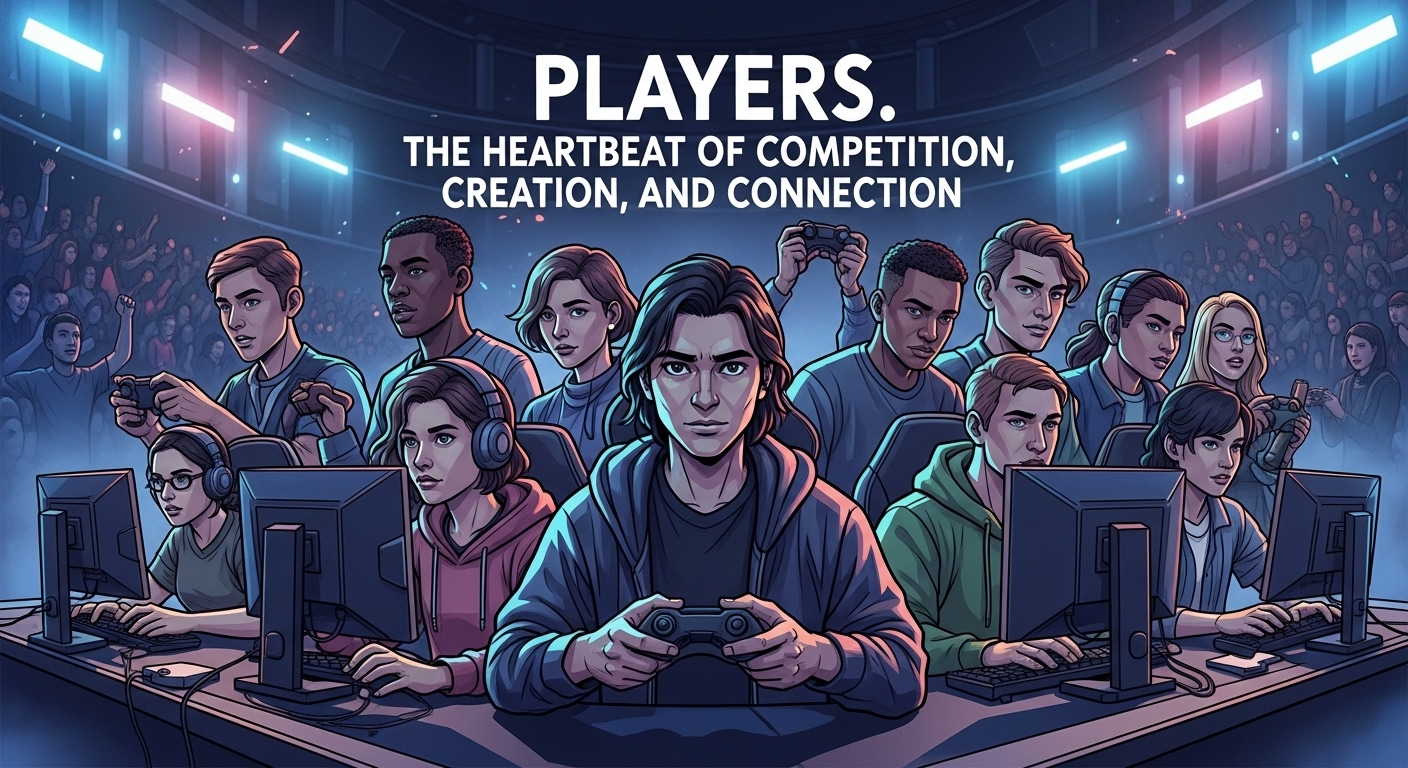In every arena of human endeavor, from the roar of a stadium to the quiet intensity of a gaming console, from a theatrical stage to a boardroom, the “player” is the central figure. A player is someone who engages in a game, sport, or activity, actively participating and contributing to its unfolding. More than just a participant, a player embodies skill, strategy, passion, and the fundamental human drive to compete, create, and connect.
The Diverse Roles of a Player
The concept of a “player” is incredibly broad, encompassing a multitude of roles and contexts:
- Athletes in Sports: These are individuals who compete in physical games, honing their bodies and minds to achieve peak performance. From a cricket batsman to a football striker, a tennis ace, or an Olympic runner, sports players demonstrate discipline, teamwork, endurance, and strategic thinking. Their performances inspire millions and often transcend national boundaries.
- Gamers in Digital Worlds: In the vast landscape of video games, players navigate virtual worlds, overcome challenges, and interact with complex systems. This includes casual mobile gamers, dedicated PC enthusiasts in esports (like a MOBA player or an FPS combatant), and console gamers immersed in rich narratives. These players are increasingly influential, shaping game development and fostering massive online communities.
- Performers in Creative Arts: In theater, music, and other performing arts, “players” are the actors, musicians, and dancers who bring stories and emotions to life. They embody characters, interpret scripts, and connect directly with an audience, creating a unique and ephemeral shared experience.
- Participants in Games & Hobbies: From a card game player to someone building a complex puzzle, or engaging in a tabletop role-playing game, these players find enjoyment, mental stimulation, and social interaction through structured activities.
- Actors in Social Contexts: Even outside formal games, individuals “play a role” in various social interactions – a player in a negotiation, a player in the market, or simply playing a part in a social gathering. This highlights the strategic and performative aspects of human interaction.
The Qualities of a Player: Beyond Mere Participation
What elevates a mere participant to a true player?
- Skill and Mastery: The relentless pursuit of improving one’s abilities, whether it’s perfecting a serve in tennis, mastering a character’s abilities in a MOBA, or flawlessly delivering a theatrical monologue.
- Strategy and Forethought: The capacity to think ahead, anticipate opponents’ moves, plan actions, and adapt to changing circumstances. This is crucial whether on a football pitch or during a complex turn in a role-playing game.
- Passion and Dedication: A deep love for the game or activity that fuels perseverance through challenges, rigorous training, and countless hours of practice.
- Resilience: The ability to learn from mistakes, recover from setbacks, and maintain composure under pressure.
- Collaboration (often): In team-based games and sports, players must communicate effectively, trust their teammates, and work together towards a common goal.
- Sportsmanship/Fair Play: Adhering to the rules, respecting opponents, and displaying integrity, even in the heat of competition.
The Player in 2025: Trends and Transformations
As of mid-2025, the concept of the player is evolving, shaped by technology and changing cultural norms:
- Data-Driven Performance: Athletes and gamers alike are leveraging advanced analytics and AI to meticulously track and optimize their performance. Wearable tech, biometric sensors, and AI-powered feedback systems provide unprecedented insights, allowing players to refine every aspect of their game.
- Hyper-Personalization: From customized training regimens in fitness apps to AI-generated content in role-playing games that adapt to player choices, the experience of being a player is becoming increasingly tailored to individual preferences and skill levels.
- Blurring Lines Between Physical and Digital: The rise of esports means many “players” are professional gamers, honing skills that mirror traditional athletic demands (reaction time, strategy, teamwork). Virtual reality (VR) and Augmented Reality (AR) are also creating new forms of play, allowing individuals to physically interact with digital environments.
- Creator-Players: Many players are also content creators. Gamers stream their gameplay, athletes share their training routines, and actors share behind-the-scenes glimpses, blurring the lines between playing and performing for an audience.
- Inclusivity and Accessibility: Efforts are being made across sports and games to make participation more accessible and inclusive for individuals of all abilities, genders, and backgrounds, fostering wider player bases.
- Community Power: Online communities, forums, and social platforms are vital for players to connect, share strategies, celebrate achievements, and even form teams. This sense of belonging is a powerful draw for many.
Whether chasing a championship trophy, embarking on an epic virtual quest, or simply enjoying a friendly game with friends, the “player” remains the dynamic force that brings any activity to life. They are the heartbeat of competition, the architects of shared narratives, and the ultimate reason why games, sports, and creative endeavors continue to capt captivate and connect us all.

